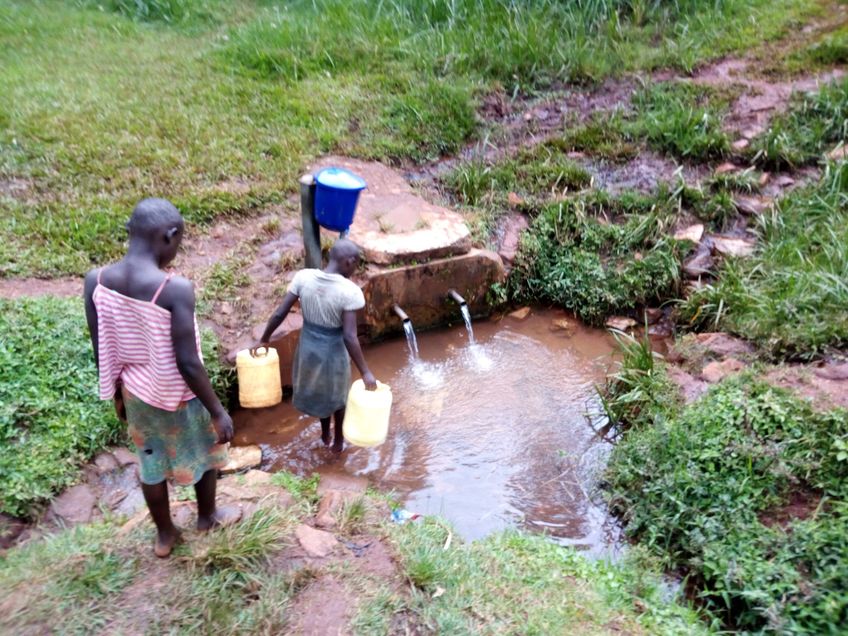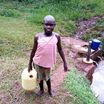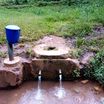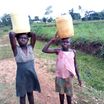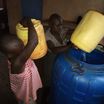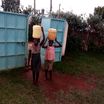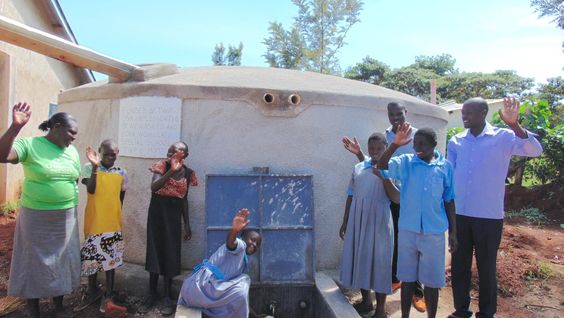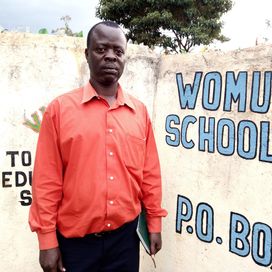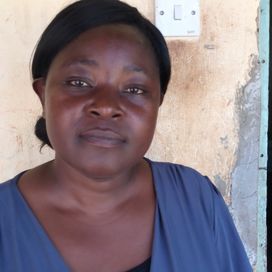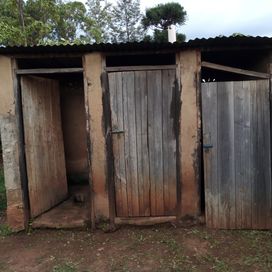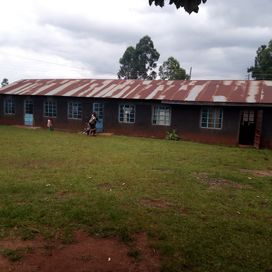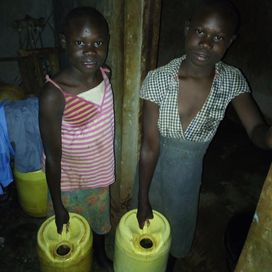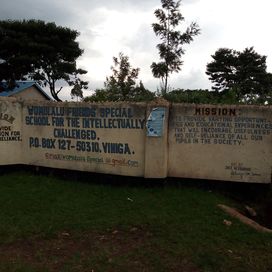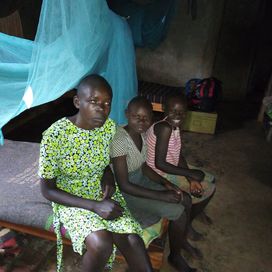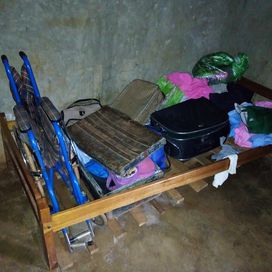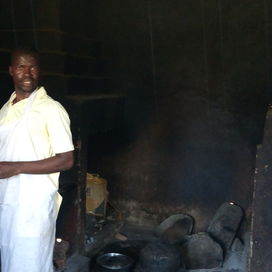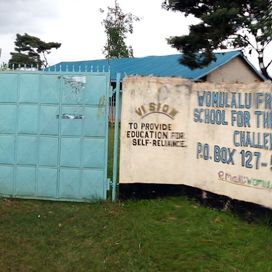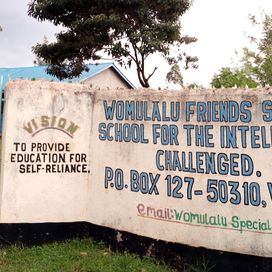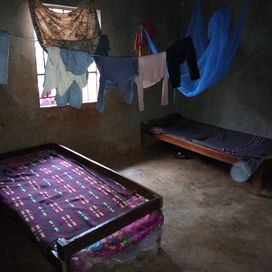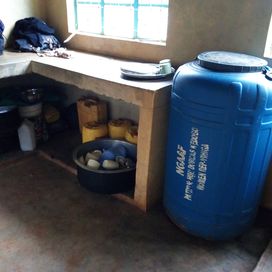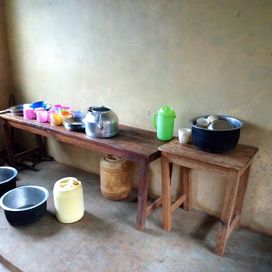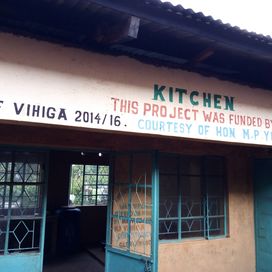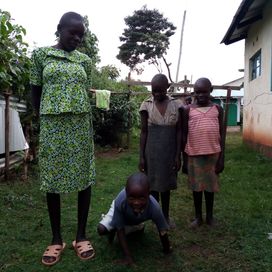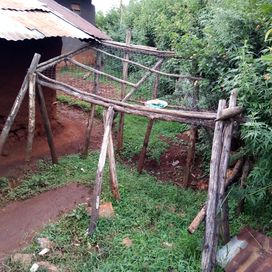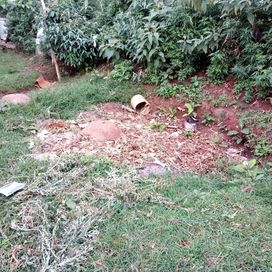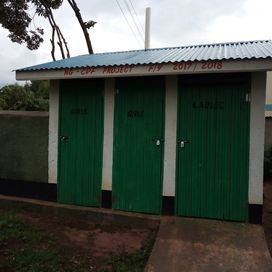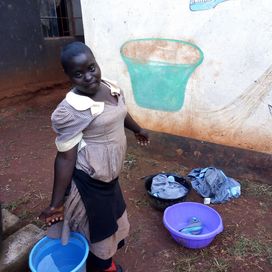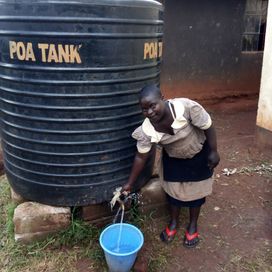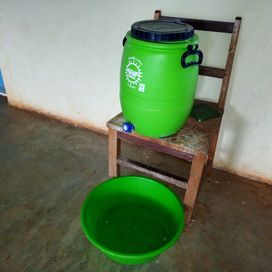Project
Womulalu Special School
Project Complete!
Womulalu Special School, located in western Kenya, started in 1995 with an enrollment of four. Enrollment grew gradually so that in 2008, there was a need for a boarding facility for learners since it had become impossible for some of the children to commute daily.
Students in the boarding section are woken up at 6 am so that they have one hour to bathe and take breakfast. The day scholars report by 7 am to help do cleaning chores under the guidance of a teacher. There is always morning announcements from 7:45 am to 8 am, then students are released to go to their classes. Class activities depend on the learners’ moods because they are not taught as a group, but each learner is given special attention. Class hours end at 12:30 when they go for lunch, afterward teachers keep an eye from a distance as pupils engage in self-directed activities that reinforce the class lessons learned. They also participate in ball games and choir.
Students in the boarding section are woken up at 6 am so that they have one hour to bathe and take breakfast. The day scholars report by 7 am to help do cleaning chores under the guidance of a teacher. There is always morning announcements from 7:45 am to 8 am, then students are released to go to their classes. Class activities depend on the learners’ moods because they are not taught as a group, but each learner is given special attention. Class hours end at 12:30 when they go for lunch, afterward teachers keep an eye from a distance as pupils engage in self-directed activities that reinforce the class lessons learned. They also participate in ball games and choir.
Urgent need: The public health and sanitation center visited the school and gave them a final warning. They threatened to issue a closure notice in the case the school does nothing to improve health and sanitation.
The school was able to buy a 10,000-liter plastic tank to catch rainwater for the students. But since it’s a boarding school, it realistically needs around 1,500 liters of water per day to operate. This means the tank can only last one week before needing more rainwater.
This forces some of the more able students to leave school and get water from the community. They walk to a spring that where a wall and discharge pipe have been built to make filling a container a bit easier. However, we noticed that the spring does not have a full spring box to keep away contaminants that can wash into the water when it rains. There’s a steep hill down to the spring that’s difficult for students to climb once they have their containers full of water.
Sometimes there are too many people at the spring, forcing students to waste a lot of time before getting their own turn. Besides the way to the spring get steep as one approaches the spring. The situation becomes worse during wet seasons when the place gets very slippery and the spring’s water gets polluted since the spring box is open to external contamination.
“Lack of enough drinking water has caused us diseases and a lot of trouble that we are tired of. Just help us eradicate diseases that have tormented our children so that they can comfortably concentrate on studies,” pleaded Teacher Kunza.
The school was able to buy a 10,000-liter plastic tank to catch rainwater for the students. But since it’s a boarding school, it realistically needs around 1,500 liters of water per day to operate. This means the tank can only last one week before needing more rainwater.
This forces some of the more able students to leave school and get water from the community. They walk to a spring that where a wall and discharge pipe have been built to make filling a container a bit easier. However, we noticed that the spring does not have a full spring box to keep away contaminants that can wash into the water when it rains. There’s a steep hill down to the spring that’s difficult for students to climb once they have their containers full of water.
Sometimes there are too many people at the spring, forcing students to waste a lot of time before getting their own turn. Besides the way to the spring get steep as one approaches the spring. The situation becomes worse during wet seasons when the place gets very slippery and the spring’s water gets polluted since the spring box is open to external contamination.
“Lack of enough drinking water has caused us diseases and a lot of trouble that we are tired of. Just help us eradicate diseases that have tormented our children so that they can comfortably concentrate on studies,” pleaded Teacher Kunza.
What we can do:
Training
“Our sanitation and hygiene is so poor. We need to be enlightened on how to have good health so that positive transformation comes in,” said School Matron Claris.
Training on good hygiene habits will be held for two days. The facilitator will use PHAST (participatory hygiene and sanitation transformation), ABCD (asset-based community development), CTC (child to child), lectures, group discussions, and handouts to teach health topics and ways to promote good practices within the school. The CTC method will prepare students to lead other students into healthy habits, as well as kickstart a CTC club for the school.
Handwashing Stations
Two handwashing stations will be delivered to the school, and the CTC club will fill them with water on a daily basis and make sure there is always a cleaning agent such as soap or ash.
VIP Latrines
There is only one latrine per gender. Their latrines are very old and the pits are almost full. The boys do not have a urinal pit and end up urinating behind their latrine when the line is too long to wait. There is no water close to those latrines, so many students do not wash hands after using latrines.
Two triple-door latrines will be constructed with local materials that the school will help gather. Three doors will serve the girls while the other three serve the boys. And with a new source of water on school grounds, students and staff should have enough to keep these new latrines clean.
Rainwater Catchment Tank
A 50,000-liter rainwater catchment tank will help alleviate the water crisis at this school. The school will also help gather the needed materials such as sand, rocks, and water from the spring for mixing cement. Once finished, this tank can begin catching rainfall that will be used by the school’s students and staff.
We and the school strongly believe that with this assistance, standards will significantly improve. These higher standards will translate to better academic performance!
Training
“Our sanitation and hygiene is so poor. We need to be enlightened on how to have good health so that positive transformation comes in,” said School Matron Claris.
Training on good hygiene habits will be held for two days. The facilitator will use PHAST (participatory hygiene and sanitation transformation), ABCD (asset-based community development), CTC (child to child), lectures, group discussions, and handouts to teach health topics and ways to promote good practices within the school. The CTC method will prepare students to lead other students into healthy habits, as well as kickstart a CTC club for the school.
Handwashing Stations
Two handwashing stations will be delivered to the school, and the CTC club will fill them with water on a daily basis and make sure there is always a cleaning agent such as soap or ash.
VIP Latrines
There is only one latrine per gender. Their latrines are very old and the pits are almost full. The boys do not have a urinal pit and end up urinating behind their latrine when the line is too long to wait. There is no water close to those latrines, so many students do not wash hands after using latrines.
Two triple-door latrines will be constructed with local materials that the school will help gather. Three doors will serve the girls while the other three serve the boys. And with a new source of water on school grounds, students and staff should have enough to keep these new latrines clean.
Rainwater Catchment Tank
A 50,000-liter rainwater catchment tank will help alleviate the water crisis at this school. The school will also help gather the needed materials such as sand, rocks, and water from the spring for mixing cement. Once finished, this tank can begin catching rainfall that will be used by the school’s students and staff.
We and the school strongly believe that with this assistance, standards will significantly improve. These higher standards will translate to better academic performance!
0.038956 latitude, 34.703102 longitude
H2O for Life is not a WASH (water, sanitation and hygiene) project implementer. We have partnerships with non-governmental organizations (NGOs) implementing WASH in Schools projects around the world. Our NGO partners match funds needed for each school project. We also have a generous donor that provides us with an interest-free loan that, along with matching funds, allows for many projects to be started or possibly even completed before total funds have been raised. In rare situations we reserve the right to reallocate funds to alternate project(s).
Questions? Ask us at 651-756-7577 or info@h2oforlifeschools.org.
September 25, 2020
Project Complete at Womulalu
Womulalu Special School in Kenya now has access to a new source of safe, clean water thanks to the completion of their rain catchment tank, which has the ability to...
